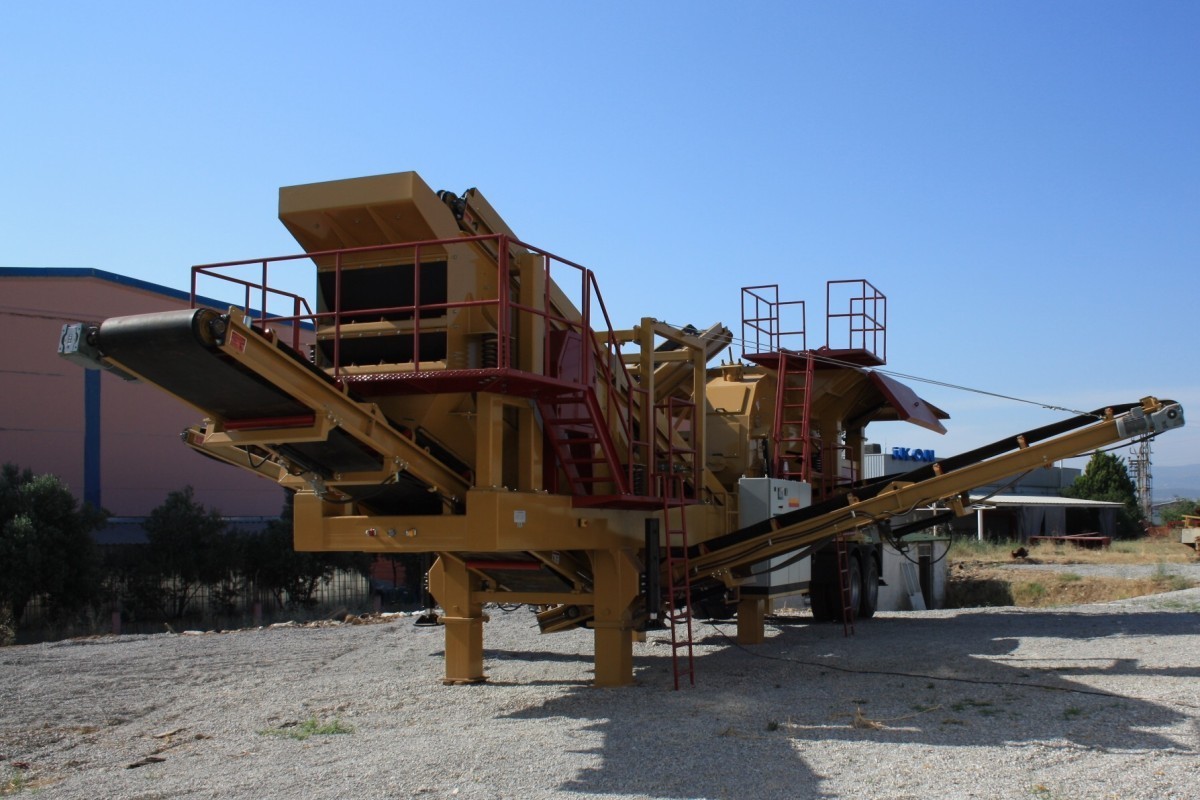Rock crushing and screening machines are essential equipment used in construction, mining, environmental management, and other industries. These machines break large rocks and stones into smaller, usable pieces for various sectors. Rock crushers break stones into smaller, processable sizes, while screening machines separate the broken pieces based on their size. In this article, we will provide a detailed review of rock crushing and screening machines, including their working principles, types, applications, and technical features.
1. What Are Rock Crushing Machines?
Rock crushing machines are used to break large rock blocks into smaller pieces, primarily used in industrial-scale quarries and mining operations. These machines aim to break rocks into desired sizes, making them more processable. Rock crushers typically use powerful motors and sharp steel jaws to break apart rocks, ensuring they are reduced to manageable sizes.
Working Principle of Rock Crushers
Rock crushers usually work with a cone crusher system. A crusher is a machine that breaks stones using mechanical force. These machines typically come in two main types: primary crushers and secondary crushers. Primary crushers perform the initial breaking of rocks, while secondary crushers further reduce the size of the broken pieces. In this system, rocks are crushed between two jaws that move against each other.
2. What Are Screening Machines?
Screening machines are used to separate broken rocks and stones into specific sizes, commonly used in industrial processes. These machines sort stones based on size, making them ready for different industrial applications. Screening machines ensure that stones of every size are sorted and used appropriately.
Working Principle of Screening Machines
Screening machines typically work using a vibrating mechanism. These machines pass stones through screens, sorting them based on size. During the screening process, smaller stones fall through the lower screens, while larger stones remain on top and pass through different screens.
3. Applications of Rock Crushing and Screening Machines
Construction Industry
In the construction industry, rock crushing and screening machines play a critical role in producing aggregates, which are the essential materials used in construction. These machines help create the right-sized gravel, sand, and stones needed for construction projects.
Mining Industry
In the mining sector, rock crushing machines are commonly used. During the processing of minerals, reducing the size of rocks and stones improves processing efficiency. These machines ensure that ores can be processed more effectively.
Environmental Management and Landscaping
In environmental management and landscaping projects, rock crushing and screening machines are used to break natural stones into various sizes for aesthetic and functional use. Additionally, these machines are used to clear excess rocks and stones from construction sites efficiently.
4. Types of Rock Crushing and Screening Machines
Jaw Crushers
Jaw crushers are the most common type of rock crushers. In these machines, rocks are placed between two jaws, which crush the stones by applying pressure. Jaw crushers are typically used for the primary breaking of larger rocks.
Hammer Crushers
Hammer crushers use powerful hammers to break rocks into smaller pieces and are generally used for secondary crushing. These machines are effective in breaking down rocks into finer products.
Roll Crushers
Roll crushers work by squeezing rocks between two large rollers. These crushers are used to break stones into more uniform sizes and are typically employed for finer materials.
Vibrating Screens
Vibrating screens are used in screening machines to separate stones based on their size. Stones pass through the screens, and based on their size, they are classified accordingly.
5. Technical Features of Rock Crushing and Screening Machines
Motor Power
The motor power of a rock crusher directly affects its capacity to break rocks. Higher motor power allows the machine to break larger and harder stones more quickly.
Screen Sizes and Screening Capacity
The size of the screens in screening machines determines how quickly and efficiently stones can be sorted. Larger screens allow for greater quantities of stones to be processed.
 English
English
 Le français
Le français
 Türkçe
Türkçe

